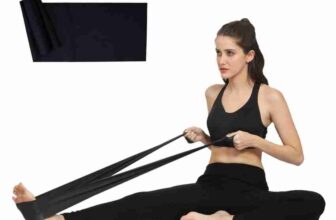
Stability training plays a vital role in athletic performance, helping athletes achieve better balance, coordination, and strength.
Integrating stability-focused exercises into your routine can lead to significant improvements in performance, injury prevention, and overall fitness.
This article delves into effective methods for incorporating stability training into your workouts.
Table of Contents
Improving Balance and Core Strength with Weighted Vests

Source: military.com
Adding a weighted vest to stability exercises is one of the most effective ways to enhance athletic performance. Weighted vests provide additional resistance, making your muscles work harder to maintain stability. Exercises like squats, lunges, and planks become more challenging when combined with the vest, forcing your core and stabilizer muscles to engage more intensely.
Using weighted vests in functional movements improves muscle endurance, which is critical in athletic activities that require balance and quick changes in direction. This makes them an excellent addition to a well-rounded stability training program.
In addition to the weighted vest, incorporating tools like the Zelus balance ball can further refine your stability training routine. The Zelus balance ball challenges your balance by creating an unstable surface, which requires constant core engagement to maintain stability. This combination of tools not only strengthens muscles but also enhances coordination and reflexes, essential components of athletic performance.
Enhancing Coordination and Flexibility with Unstable Surfaces
Using unstable surfaces such as balance balls and wobble boards takes stability training to another level. These surfaces demand continuous adjustments from your muscles, leading to improved coordination and flexibility. As your body adapts to the instability, your stabilizer muscles grow stronger, contributing to better balance and agility in athletic movements.
Athletes can integrate these tools into exercises like single-leg squats, push-ups, and planks, ensuring a comprehensive approach to stability training. Over time, this leads to greater control over movements, reduced risk of injury, and better overall performance in sports.
The Role of Stability Training in Injury Prevention

Source: performancesportsmedinstitute.com
Injury prevention is a key aspect of any athletic training program. Stability exercises focus on strengthening the muscles that support joints, especially those around the knees, hips, and ankles. By enhancing these areas, athletes reduce their risk of common sports injuries such as sprains and strains.
Incorporating stability exercises into your routine helps build resilience against sudden movements and awkward positions, which often lead to injuries. This proactive approach to training allows athletes to stay in peak condition for longer periods.
Key Exercises to Incorporate Stability Training

Source: barbend.com
Stability training includes a wide range of exercises that target different muscle groups. Below are some of the most effective exercises to enhance athletic performance:
- Single-Leg Deadlifts: This exercise strengthens the hamstrings, glutes, and lower back while challenging your balance. Holding a weight in one hand while performing the movement adds an extra layer of difficulty.
- Plank Variations: Planks engage the core muscles, which are crucial for maintaining stability in athletic movements. Variations such as side planks or planks with leg lifts further activate stabilizer muscles.
- Lateral Band Walks: Using a resistance band around your legs, perform side steps to target the hip abductors and glutes. This movement helps improve lateral stability, essential for sports involving side-to-side motion.
- Standing Wood Chops: This dynamic movement mimics rotational movements often seen in sports like tennis or baseball. It engages the core while promoting stability and power.
Progressing in Stability Training
Stability training should progress as your strength and coordination improve. Begin with bodyweight exercises and gradually introduce additional tools like balance boards, resistance bands, and weighted vests. As you become more comfortable, increase the difficulty by performing exercises on one leg or with eyes closed, which forces your body to rely more on proprioception.
Benefits Beyond Performance
Stability training not only improves athletic performance but also enhances overall functional fitness. Daily activities such as walking, climbing stairs, and lifting objects become easier when stability is a priority in your workout routine. For athletes, this translates to improved performance in sports-specific movements and quicker recovery times after intense activities.
Conclusion
Incorporating stability training into your workout routine is essential for enhancing athletic performance. By using tools like weighted vests and the Zelus balance ball, athletes can improve their balance, coordination, and overall strength. Consistent stability training not only leads to better performance but also reduces the risk of injuries, ensuring longevity in athletic endeavors. Make stability a key part of your training plan to unlock your full potential in sports and fitness.








